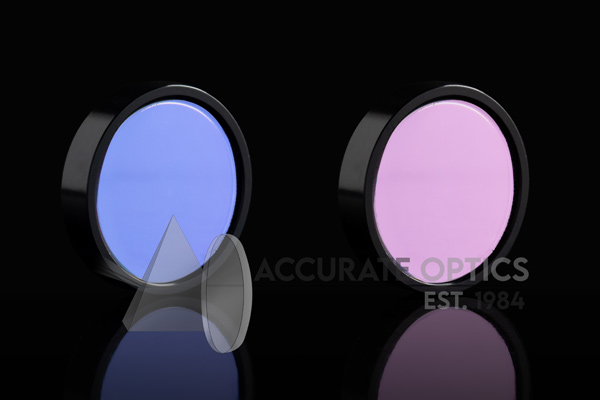How Does a Plano Concave Lens Diverge Light?
In the realm of optics, lenses play a pivotal role in shaping the behavior of light. Among these lenses, the plano concave lens stands out as a diverging lens with unique properties. Its ability to diverge light sets it apart from its convex counterparts and opens up a world of possibilities in various optical applications. In this in-depth blog post, we will explore the fascinating science behind how a plano concave lens diverges light, the principles governing its behavior, and its significant role in shaping optical systems. So, let’s embark on a journey to unravel the secrets of light manipulation through the captivating world of the plano concave lens.
Understanding the Plano Concave Lens
Before delving into how a plano concave lens diverges light, let’s grasp the fundamental characteristics of this lens type. A plano concave lens features one flat (plano) surface and one concave (curved inward) surface. The curvature of the concave surface causes the lens to be a diverging lens, dispersing light rays away from its principal axis. This unique feature distinguishes it from its convex counterpart, the converging lens, which converges light towards its principal axis.
The Science Behind Light Refraction
To comprehend how a plano concave lens diverges light, we must first understand the principle of refraction. When light passes from one medium to another with a different refractive index, its speed changes, causing it to bend or refract. The amount of bending depends on the difference in refractive indices between the two media and the angle of incidence.
Refraction at a Plane Surface
At the flat (plano) surface of the plano concave lens, the light rays encounter a change in medium (e.g., air to lens material or lens material to air). This results in refraction at the interface between the two media. The amount of bending depends on the angle of incidence and the refractive indices of the media involved.
Refraction at the Concave Surface
As light passes through the curved (concave) surface of the lens, it encounters a gradual change in refractive index, leading to continuous refraction. The curvature of the concave surface causes light rays to bend outward, away from the principal axis of the lens. This divergence of light is the defining characteristic of the plano concave lens and is vital in various optical applications.
Principles of Light Divergence in Plano Concave Lenses
The divergence of light in a plano concave lens can be understood through two main principles: thin lens equation and Snell’s law of refraction.
- Thin Lens Equation: The thin lens equation relates the focal length (f) of the lens, the object distance (u), and the image distance (v) from the lens. For a plano concave lens, the focal length is negative, representing the fact that the lens is diverging light. The equation is given as:
1/f = 1/v – 1/u
Where:
f = focal length of the lens (negative for a plano concave lens)
v = image distance from the lens
u = object distance from the lens
- Snell’s Law of Refraction: Snell’s law describes the relationship between the angles of incidence (θ₁) and refraction (θ₂) and the refractive indices (n₁ and n₂) of the two media involved. For a plano concave lens, the light rays diverge upon passing through the curved surface due to the decreasing refractive index towards the lens center.
n₁ * sin(θ₁) = n₂ * sin(θ₂)
Where:
n₁ = refractive index of the first medium (e.g., air)
n₂ = refractive index of the lens material
Applications of Diverging Light in Plano Concave Lenses
The ability to diverge light makes plano concave lenses invaluable in a myriad of optical applications:
- Beam Expansion: Plano concave lenses are commonly used to expand laser beams, creating larger and more controlled laser spots for various applications such as laser cutting and materials processing.
- Image Projection: In projectors and optical systems, plano concave lenses help to adjust the size and position of images for projection.
- Correcting Optical Aberrations: Plano concave lenses, when used in conjunction with other lenses, can help correct spherical aberrations and coma in optical systems.
- Telescopes and Astronomy: In astronomical telescopes, plano concave lenses assist in creating wider fields of view and correcting certain optical aberrations.
- Ophthalmology: These lenses are used to correct nearsightedness (myopia) by diverging light rays before they enter the eye’s lens.
- Collimation: Plano concave lenses are employed in collimating light sources to ensure parallel beam propagation.
Conclusion
The science behind how a plano concave lens diverges light is a captivating journey through the principles of refraction and lens optics. The concave curvature of the lens surface causes light rays to bend outward, resulting in a diverging effect that is essential in numerous optical applications. By understanding the thin lens equation and Snell’s law of refraction, we gain insights into the principles governing light manipulation in plano concave lenses.
From laser beam expansion to image projection and correcting optical aberrations, the versatile applications of plano concave lenses are a testament to their importance in optical systems. As we continue to explore and harness the power of light, the plano concave lens remains a fascinating and indispensable component in shaping the future of optics.








